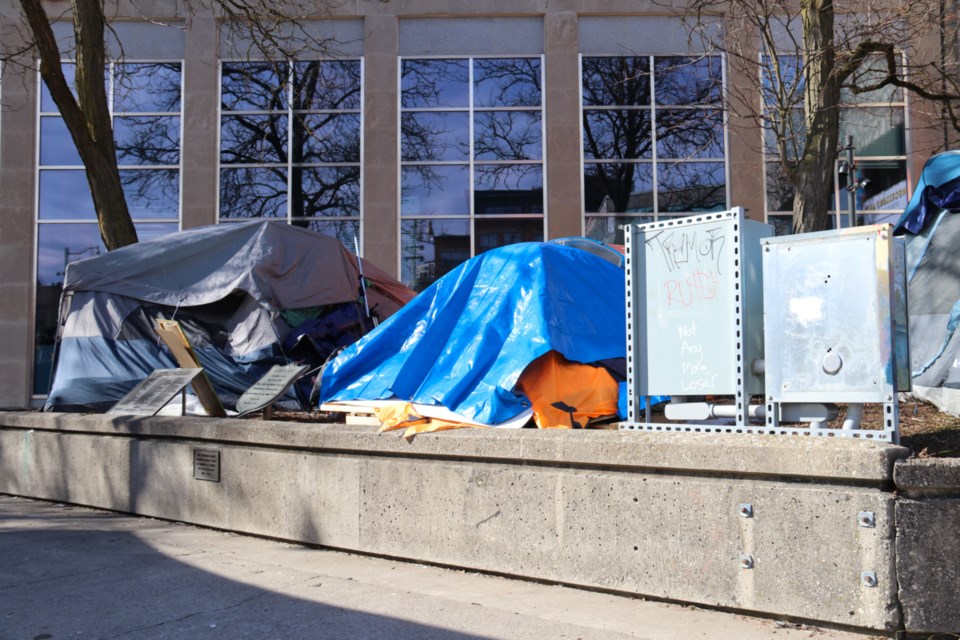GUELPH, Ont. — Could the public space use bylaw face a legal challenge?
The controversial bylaw dictating where encampments can and can’t be came into effect on Tuesday, and the Legal Clinic of Guelph & Wellington County previously stated it would likely take the city to court over the bylaw if passed.
But whether a legal challenge will follow remains to be seen.
BEHIND THE SCENES: Homeless encampment consuming frustrated North Bay neighbourhood
Since the bylaw just came into effect and the map showing the unrestricted areas was just released, non-compliant structures likely won't be removed for at least a few weeks.
During that time, executive director Stephanie Clendenning said the clinic plans to review the maps and meet with community partners to see how the unrestricted areas impact the unhoused, and gauge what their response is to the locations they can move to.
That includes the proximity to necessary services and the accessibility of the areas, as well as if there are sufficient accessible locations for the number of unhoused people, if the sites are large enough to hold five clusters of structures, and how the locations will impact service providers in their work.
See also: 'Time for action is now:' Homeless encampment motion passes
If the response to the unrestricted locations is positive, she said residents might go voluntarily, which would mean there isn’t necessarily cause for legal action.
“Obviously, the clinic cannot take any legal action without a client who has the desire and actual grounds to challenge the bylaw so we need to wait and see what the impact is and what the implementation process looks like before making any decisions,” Clendenning said. Ideally, that would be someone living in an encampment who is directly impacted by the bylaw.
She did note the wording of the bylaw and map feels backwards: “They’re not trying to say, here’s where you can go. They’re just saying, we’re not going to say you can’t go here.
“While the city has shied away from calling the ‘no restrictions’ sites designated encampment locations; practically, this is what the map has created.”
If the city started with the map and getting proper community and accessibility advisory committee (AAC) consultation before implementing a bylaw, “they could have worked together collaboratively to ensure that some of the no restrictions locations would be accessible.”
This also would have allowed for more time to add supports for providers to access the new locations, “both of which would have deescalated community tensions significantly.”
“I cannot emphasize this enough: A public space use bylaw was completely unnecessary. We could have avoided a lot of problems had council simply taken a mapping approach with community consultation right from the start,” she said. “Staff was not provided with adequate time to do this properly and had council simply slowed the process down, I think this community could have avoided a lot of needless risk and friction.”
In the meantime, she said it will be a few weeks before they know what the next steps will look like.
“While mapping and clearly designating 'no restriction' sites is a step in the right direction, it is unfortunate that it is only happening at this late stage,” she said. “Because it was done without community or AAC consultation, it remains to be seen whether the new sites will be able to meet the needs of the unhoused. All of this will impact whether a charter challenge will be brought or even required.”
— GuelphToday



